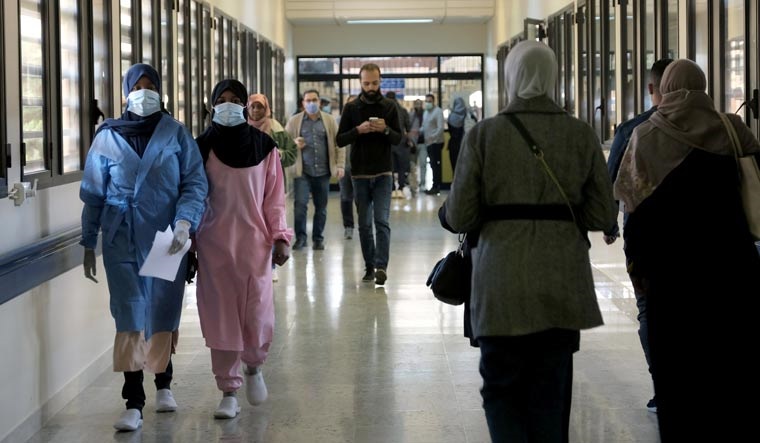“The dose makes the poison”
—Paracelsus
“The solution to pollution is dilution,” is a mantra drilled into the minds of first-year medical students. It makes sense. Increase the good stuff and the bad stuff is weaker, perhaps useless, and unnoticeable. In times of the novel coronavirus, it has a corollary, the understanding of which could save lives: The prescription against Covid contagion is ventilation. If you find yourself having to interact with others, and especially groups of people, best to take this pill: increase the flow of good air — ventilate — to dilute the level of virus in the air you breathe.
Think of air with the virus as polluted air. Every time someone breathes he or she is potentially adding pollutants into the air you are going to breathe. Increase the flow of good air and you dilute the concentration of the virus.
Now, there is a bit more to it, but follow me.
It takes more than just one SARS-Cov2, the virus responsible for COVID-19, to make you sick because once it enters your body it is in a battle with your immune system. Virus wins, you are infected. Virus loses, you win.
Think of a nuclear bomb. The fuel cannot explode unless there is a critical mass that has more particles released than can escape its surface — critical mass. That too has a corollary in the viral infections universe, it is called the 'infection dose', you have to have enough for the infection to explode inside you overwhelming the immune system instead of the other way around.
Armed with this knowledge, we now know that small amounts of the virus may enter your body in one interaction or several integrations.
Viewing the coronavirus through that lens — that the “dose” of the virus is important in determining the course of the infection, and knowing that you can control the dose through ventilation, you can be better armed to protect yourself against COVID-19.
It is not a new concept. According to Erin Bromage, associate professor of biology at the University of Massachusetts-Darmouth, many viruses, including poxviruses, influenza viruses, and others have shown that they need a certain dose to trigger an infection.
In other words, a low enough dose and the body will be able to fend off without causing any disease at all. A critical mass or 'infectious dose'— a minimum dose of SARS-CoV-2 — will establish an infection; the higher dose of virus, then, will lead to more severe outcomes.
Now, imagine a cough or a sneeze, a laugh or a yell spreading virus in the air — contact with the cloud of virus is how infectious respiratory diseases spread. To avoid infection, you would need to be sufficiently far and in a sufficiently ventilated area to dilute the concentration, aware that the amount of virus you are exposed to can affect whether you actually get infected and how bad a case of the infection you may end up with.
Covid-19 has a low infectious dose, suspect researchers, which makes it particularly contagious in the absence of significant immunity.
“The virus is spread through very, very casual interpersonal contact,” explained W. David Hardy, a professor of infectious disease at Johns Hopkins University School of Medicine in a STAT interview noting that the SARS-CoV2 infectious dose is unknown and suspected low.
“The more viral particles that get into the lungs, the more damage to the lungs that is probably happening.
“As our understanding of the dynamics of the virus changes, an early recommendation by the Centers of Disease Control to limit contact 'within six feet of someone infected to 15 minutes' was adjusted to account for the accumulation of virus to produce an infectious load after a corrections officer in the United States became infected after a series of shortss, 30-second to 2-minute interactions. Thus the new recommendation is to limit contact within six feet of someone infected to a total of 15 minutes over the course of 24 hours.”
In other words, the cumulative effect of many short exposures is one that concentrates the virus instead of diluting it, precisely the opposite of what one must be doing.
“The more virus you are exposed to, the higher your risk, even if the exposure doesn’t happen all at once,” wrote Ryan Malosh, an epidemiologist studying respiratory virus transmission at the University of Michigan School of Public Health.
So, how to reduce the amount of virus you are exposed to?
Certainly, dilution is the solution, but this also leads us to look at mask-wearing for self-protection as a way of diminishing viral concentration for a lower infectious dose.
A face covering could reduce the inhaled dose by filtering virus-containing droplets, wrote Monica Gandhi, MD, MPH, and George Rutherford, MD, in the New England Journal of Medicine in November, so even if virus is inhaled through the mask you are likely to be exposed to less virus.
Their paper took the concept even further suggesting that lower inhaled doses could lead to a mild but protective infection that immunises by way of an asymptomatic or mild infection that stimulates “more durable T-cell and memory B-cell immunity to SARS-CoV-2.”
This is also not new, it is actually a process called 'variolation' which helped immunise parts of the population in the absence of a vaccine during the smallpox epidemic.
The cumulative meaning of all of this is that concentration — dose — of the virus matters, and it matters a lot: A lesser dose could mean you will get less sick. And the way to get a lesser dose is to dilute the levels in the air. Ventilate.



